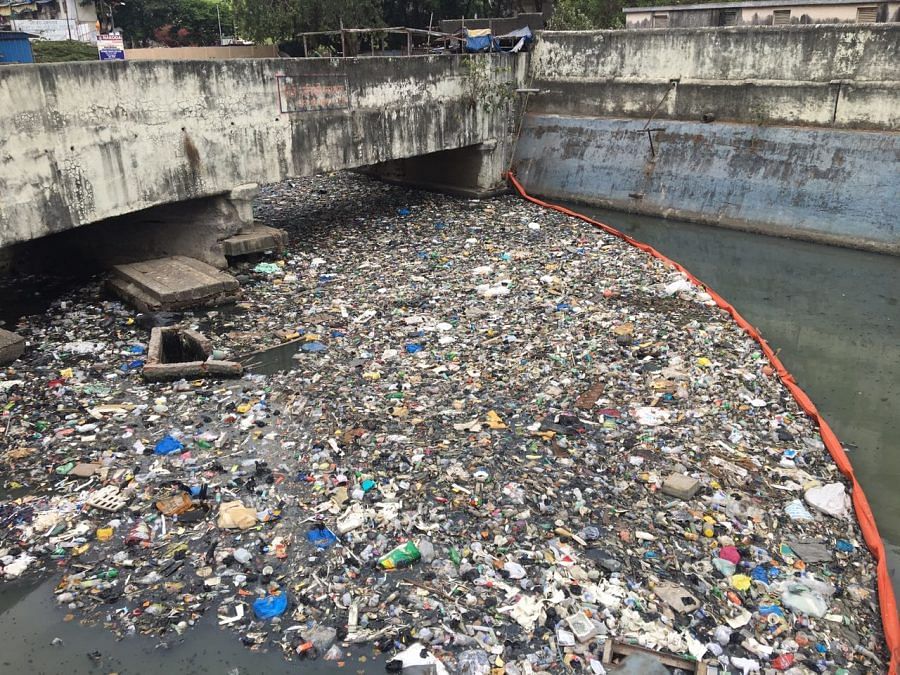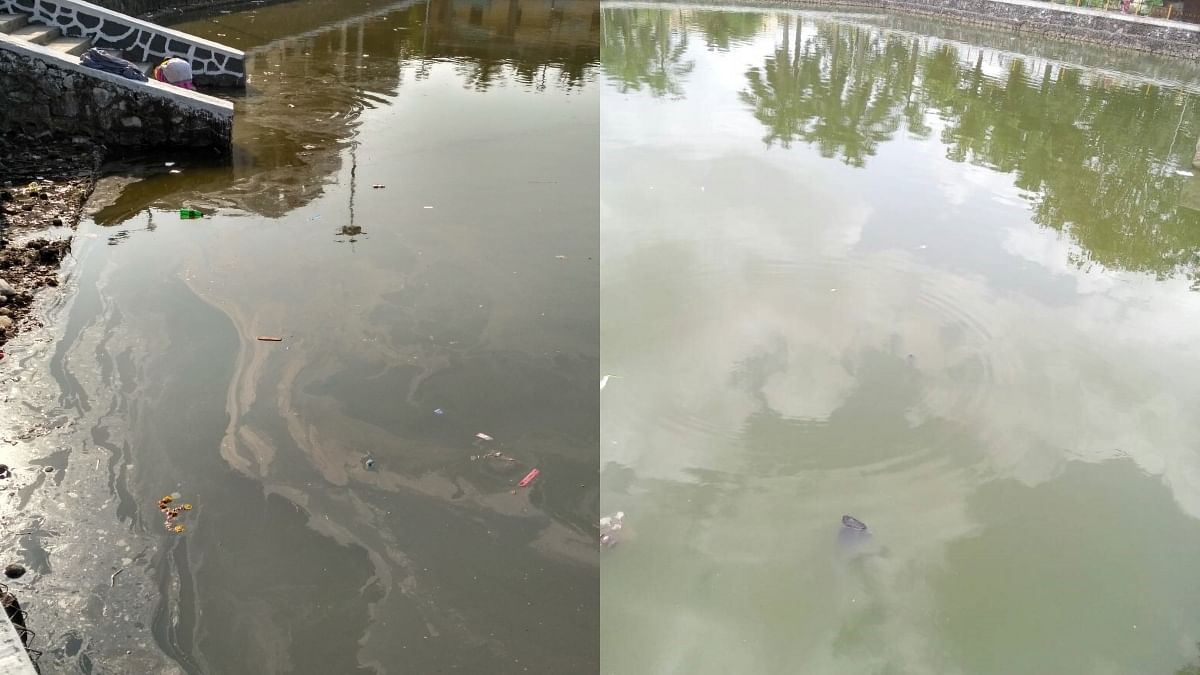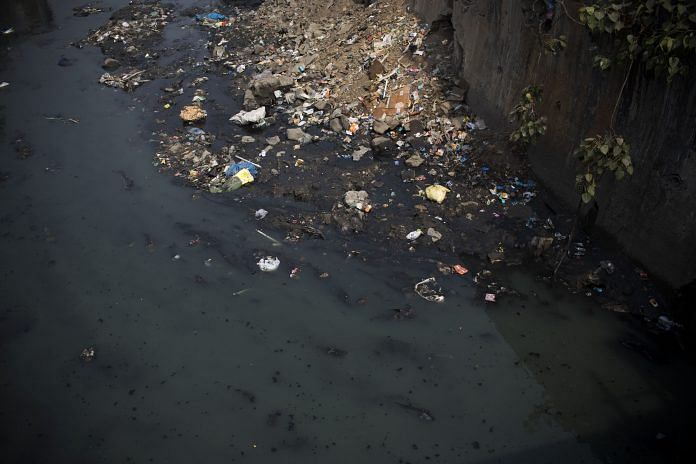The firms that deploy them work with municipalities, and the irrigation and water resource departments, and often provide end-to-end service.
Bengaluru: It’s almost hypnotic to watch: The large machines wading through trash-laden water bodies, collecting the floating garbage, and leaving behind a clear surface.
Several companies are deploying novel contraptions to address the most visible threat to our water bodies and marine life: Surface pollution.
India generates over 25,000 tonnes of plastic a day, and a lot of it ends up in our water bodies. The plastic bottles, bags and other garbage we carelessly toss out tend to hurt sea animals and birds — single-use straws get stuck in whale blowholes, ingested plastic bags kill seabirds and dolphins are often choked to death by discarded fishing nets.
However, as awareness increases, more and more citizens are taking up cleaning initiatives. And this zeal to save our water bodies has spawned a growing market for machines that not only help collect the floating trash from our rivers and lakes like Bengaluru’s ‘burning’ Bellandur, but also “refresh” the water bodies.
Floating contraptions
Cleantec Infra, one of the many small companies engaged in ridding India’s water bodies of surface trash, recently went viral when TechInsider and Futurism did video features showing its floating vehicles in action.
The vehicles, operated by the company’s crew, are equipped with a conveyor belt that picks up the trash as they move through the water.
All they pick up is stored inside the vehicle temporarily. When the storage is full, the vehicle moves to the shore and empties out the weeds and rubbish to be taken to a dump, atop another conveyor belt moving in the opposite direction.
“We felt we needed to address a key problem which everyone knew was widespread but no one was doing anything about,” said Gaurav Chopra, one of the four co-founders and director of the family-run company.
“We currently have about 30 projects under our belt, working with over 18 states across India,” he added.
Another player in the field, Agastya Buoyant, performs cleanups with a floating “trash boom”, a long inflatable pipe of sorts with a metre-long net dangling underneath.
Also read: Western UP river pollution: NGT tells industries to foot medical bill for the sick
The net acts as a barrier for the trash, which can then be hauled to the shore in the tens of kilos. The company has worked on the Ganga and the Yamuna, a few lakes in Bengaluru, and Mumbai’s drains.
“People mistakenly think that all the trash found on Mumbai’s beaches like Versova and Juhu are from everyone discarding plastic on the beach,” explained Prantik Sinha, the firm’s director.
“But actually, this comes from the ocean. The city throws its garbage into naalas. These drain into the ocean during low tide, and the ocean throws it back on the beach during high tide,” he added.
Sinha said the most effective way to check this has been to use the trash booms at the drainage point.

Companies like Cleantec Infra and Agastya Buoyant work with municipalities, and the irrigation and water resource departments, and often provide end-to-end service.
They deploy their vehicles for clean-up, and also engage the crew to manage them.
In several cases, the government purchases vehicles or equipment from the company as well.
“These services are very successful and they are doing a good job,” said B.A. Shivananda, engineering officer at the Bangalore Development Authority (BDA), about lake-cleaning in the city. “We usually provide the contract to the bidder offering the lowest cost. Everyone is comparable,” he added.
There is a gaping hole here, though, which falls outside the purview of these companies. Once the trash is collected on land, no one knows where it ends up.
It is either handed back to the municipality or thrown into the city bins, and there’s no way to track if the same pieces enter the water again.
They clean underwater too
The companies involved in the clean-ups provide other services as well.
Cleantec Infra, for one, has Zamboni-like machines that clean up roads and beaches, as well as work on de-silting and dredging lake and riverbeds. Dredging involves digging through a water body’s bed and removing weeds and toxins in the mud.
This increases the water bodies’ ‘water holding’ capacity.
Also read: A Modi promise not kept: Images reveal how a pure Ganga turns disgustingly brown
It also takes dredging a step further, to prevent devastating floods. “We actually channel the flow of water in rivers that are meandering from their original source,” said Chopra.
When rivers meander from their original course, several times, entire villages are wiped out by flooding.
The company says its dredging operations are always conducted after lengthy discussions with local villages and also ecologists, environmentalists, and policymakers.
Agastya Buoyant, meanwhile, offers underwater lift bags that can dredge, as well as capture a piece of debris from the sea floor and float up with it.
These services are used for cleaning as well as for underwater construction and repairs, disaster rescue, and marine salvaging.
Nearly all companies in this industry offer services to clean up oil spills. Viraj Clean Sea Enterprises and Enviroguard solutions are big players in the field.
A boost for biodiversity
Some of them also make an active effort to change the ecosystem positively.
Symbio Greentech, with whom Sinha is affiliated, uses biological mechanisms to improve the quality of water in ponds and canals to restore them.
“We use phytoplankton and a combination of other plants to filter the water,” Sinha said.
“They also absorb carbon dioxide and release oxygen,” he added, “But this can only be done in small ponds, not yet in rivers or big bodies like that.”
Viraj also uses a patented technology called ‘Nualgi’ that facilitates the growth of specific algae.
It involves essential, naturally-occurring nutrients being fed into the water, which stimulate the growth of diatom algae — microscopic algae that are identifiable by the slimy texture they cause on rocks or plants in water.
These oxygenate the environment while also entering the food chain as a source of nutrition to small creatures like shrimp and insect larvae, which are then eaten by bigger fish, thus increasing biodiversity.
“We don’t introduce any chemicals or enzymes,” said Supriya Varadhan, business development manager for the company. “Our products give a push to the algae that already exist in the lake, so that they can multiply and procreate.”

The results can be rapid, with noticeable change in just a matter of days, but the size of a water body and the kind of pollutants in it are important determinants.
For now, the industry is just budding. The long-term impact on scalability, pollution, and the environment is left to be seen.



